Making the ancient new
Editor's Note
To celebrate the fifth anniversary of the Global Times, a Global Ambassador Culture Forum was held at the Bird's Nest on April 18, inviting ambassadors from many countries to participate in roundtable discussions about the protection and inheritance of culture.

Senyuta Vadim, Minister Counselor at the Embassy of Belarus
In Belarus we are trying to protect old buildings and discover ways to protect ancient architecture, but this is not an easy thing. It needs a lot of money, technology, support, system security and so on. With the advent of the era of leisure, cultures began to pay attention to preserving architecture. Many ancient buildings have been used as important tourist places of interest. Nowadays we can't completely abandon tourism, and the question is how to find the optimal combination of tourism development and preservation.
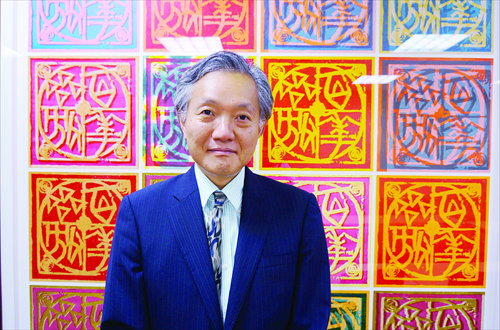
Hidehisa Horinouchi, Minister at the Embassy of Japan
The Naign Shrine in Ise has preserved the oldest architectural style of Japanese religious buildings. It's traditional to rebuild the shrine every 20 years on land next to the previous shrine. It's the best way to a preserve the art of ancient architecture. The 62nd rebuilding took place in 2013, so if you go see the shrine now, you can see a building that was finished over a year ago but looks exactly the same as it did 1,300 years ago.

Kim Jin-gon, Minister Counselor at the Embassy of South Korea in Beijing and director of the Korean Cultural Center
Now the world has entered an era of pursuing health and better lives. Even though one can create new taste by added flavor and spices, but from the angle of health, some issues stand out, especially excess fat and artificial flavor. Now the transportation is more convenient and refrigerating technology is more advanced, so Chinese cooking should shift focus from taste to health as food materials and customer needs change. I think if Chinese food becomes healthier, people who need Chinese food around the world will become healthier.

Mahdi Safari, Ambassador of Iran to China
In line with international initiatives to protect world heritage, Iran has also issued relevant laws and regulations, and established relevant offices and departments and located money in protecting and repairing the old sites. Starting from the early 20th century, with the persuasion of the culture elites and the help from European experts, the Iranian government at the time started to review and register national architectural heritage sites.

Guillermo Chalup Liendo, Ambassador of Bolivia to China
In South America, we have culture that's as advanced and valuable as the rest of the world. Now we are facing thriving tourism and we seek to find the beauty presented by prehistory, modern history as well as nature. This is what modern tourism needs, scenes that can show the essence of culture in more concentrated spots, and this is the feature Bolivia presents.

Marija Adanja, Ambassador of Slovenia to China
It goes without saying that our prime concern is to keep original architectural heritage like hotels and restaurants in its use. But the modern standards for tourist accommodation cause problems in restoration projects. To illustrate this, the case of the Palace Hotel in Portorož is an excellent example. The hotel, which used to be the heart of tourism in Portorož, stopped operating and was closed for nearly two decades. A private investor with the help of European structural funds, launched the project for its rehabilitation. The conservation authorities gave a concession for the project to be economically feasible and agreed on a total reconstruction of the interior where only the main facade was kept from the original building. The final product is a combination of the restoration of the exterior, the complete reconstruction of the main hall at the ground floor, new interior architecture in upper floors that cannot be seen from the outside and the construction of a hotel wing as a totally new piece of architecture.
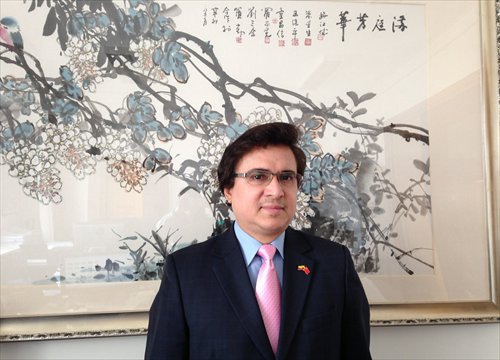
Carlos Ernesto Rodríguez Andrade, Minister at the Embassy of Ecuador
Last year, Ecuador received more than 1,360,000 tourists and according to the indicators, 629,000 people visited the city capital. In this context, we have to consider that a fundamental issue of protection of ancient architecture is to avoid rampant tourism and pollution in all its forms. In this regard, Ecuadorian law guarantees World Cultural Heritage preservation and the country follows UNESCO regulations.
Thus, the Ministry of Tourism, the Ministry of Culture and Heritage, Municipalities, religious orders, the private sector, citizens and all institutions involved are responsible for working together on the way of cultural heritage protection.
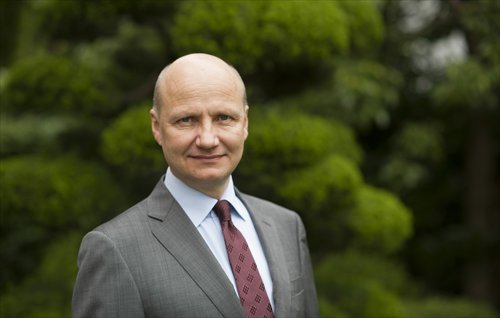
Jari Gustafsson, Ambassador of Finland to China
There was a craze to replace everything old with new things, especially in the 1960s and 1970s when our economic growth spurt took place after World War II. But in the middle of going fast forward, people felt disconnected. As a result of that public movement, many laws were crafted to further protect the built environment.
Culture cannot be protected in meeting rooms and institutions. It needs the support of the people. Also, protecting the cultural heritage should not only be a political or academic issue, but more a dialogue between the people and decision-makers. The pride that people take in their own culture and the treasures they have and the ownership that they feel are important elements in the continuous protection of world cultural heritage.

Nurlan Yermekbayev, Ambassador of Kazakhstan to China
Kazakhstan has come together with China and Kyrgyzstan to name a series of architectural sites on the Silk Road. We hope to list them as UNESCO cultural heritage sites. Now Kazakhstan has started wide scale national projects and in 2013 alone, 10 archeological researchers came to Kazakhstan. Active restoration programs are underway for 40 historical and cultural monuments, to attract tourists around the world.

Juan-Miguel Miranda, Minister Counselor at the Embassy of Peru
In Peru you can find over a hundred archeological sites developed for tourism, and many are also listed as cultural heritage sites by UNESCO, which promoted development of those sites. Cultural variety in Peru is shown by the more than 50 aboriginal languages still in use, as well as thousands of dances and musical instruments that were used in ancient times, which can still be seen and heard at celebrations. Historical sites used for tourism as well as the old traditions in Peru must not be destroyed.
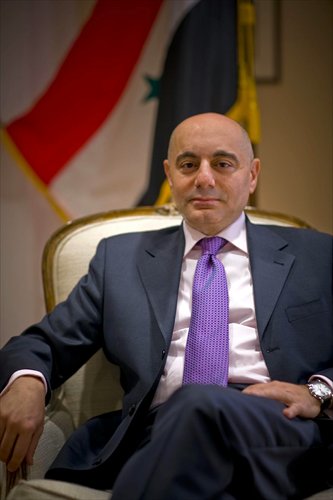
Imad Moustapha, Ambassador of Syria to China
[talking about a piece of art that was stolen from Syria and almost auctioned in London]
Scientists, historian and geologists across the world, particularly from France, Germany and Britain, wrote hundreds of e-mails to London House, saying this is a stolen property and a vital property of the people of Syria. Eventually, a happy ending took place.
There is fascinating cooperation between local villagers, authorities, UNESCO's international police organization, the Syrian community, and most importantly, scientists, archeologists and historians from across the world to preserve the heritage of Syria. This monument does not only belong to the Syrian government, it belongs to humanity.
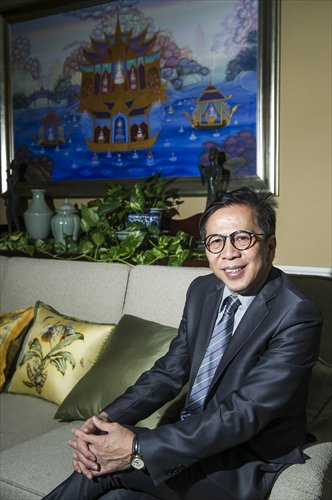
Wiboon Khusakul, Ambassador of Thailand to China
Mass tourism and excessive commercial activity is damaging the structural integrity of these sites. The challenge we face is how to strike a balance between quality and quantity. To this end, Thailand has been focusing on quality tourists, who generally stay in the country longer, and more importantly, appreciate Thailand's culture and traditions and wish to experience the places, artifacts and activities that authentically represent our people. Thus, I believe that focusing on quality tourists gives us the incentive to invest in protecting our various ancient sites and cultural heritage.

K. A. Vimalenthirarajah, Minister Counselor at the Embassy of Sri Lanka
The local people might be overlooked by the government and the tourist authorities, when they are an important part of cultural heritage protection. Many guest speakers have mentioned the development of tourism can better help us protect cultural heritage. So how can we protect it? I think there need to be laws in tourism to better define what cultural heritage is. In the development of cultural heritage tourism, destructive actions need to be punished. There is a public fund in Sri Lanka that collects money to invest in the protection of cultural heritage sites as well.

Stanley Loh Ka Leung, Ambassador of Singapore to China
In Singapore, the use of land faces competition. We need to have housing, sea ports, airports, commercial buildings and parks. In order to balance everything, we incorporated cultural heritage protection into sustainable development. Singapore is a multi-race society, so we saved some old residences of the Chinese, Indian or Malaysians. We also saved characteristic houses, such as quays where ships used to unload and turned them into tourist spots. For cultural relics that need to be saved, in order to have some economic use, they need to serve modern purposes. So the old capitol building became an art gallery and the first post office in Singapore became an antique-style grand hotel.

Mahesh Kumar Maskey, Ambassador of Nepal to China
Our cultural heritage has been left to us from past generations and we need to preserve it so that our children can see it. There's so much cultural heritage in Nepal, it tells us what the past was like and how to develop in the future.
We also have cultural festivals. Our rainforests, architecture and forests all show the variety of our culture. Cultural heritage protection is very important and the development of tourism can help us promote the protection of cultural heritage.

Tadeusz Chomicki, Ambassador of Poland to China
History has not been good to Poland's architectural monuments. However, a number of ancient structures have survived: castles, churches and stately buildings, often unique in the regional or European context. Some of them have been painstakingly restored, like Wawel Castle, or completely reconstructed after being destroyed in World War II, including the Old Town and the Royal Castle in Warsaw, as well as the old towns of Gdansk and Wrocław. World War II destroyed 90 percent of Warsaw and it has been completely restored.

Rosemary Mashaba, Minister at the Embassy of South Africa
In South Africa, we continue to share culture as an important instrument to unite our people, to build social connections and to promote considerate nation-building and nation-healing. In this regard, one of the first things we did was to place arts and culture heritage at the center of our construction of architectural platforms.